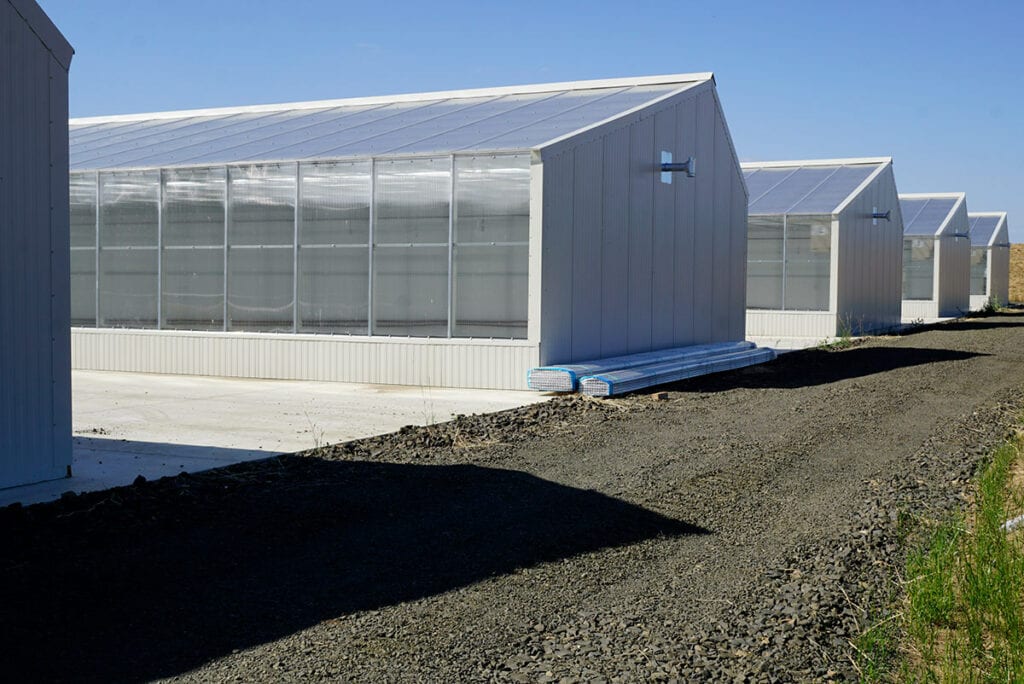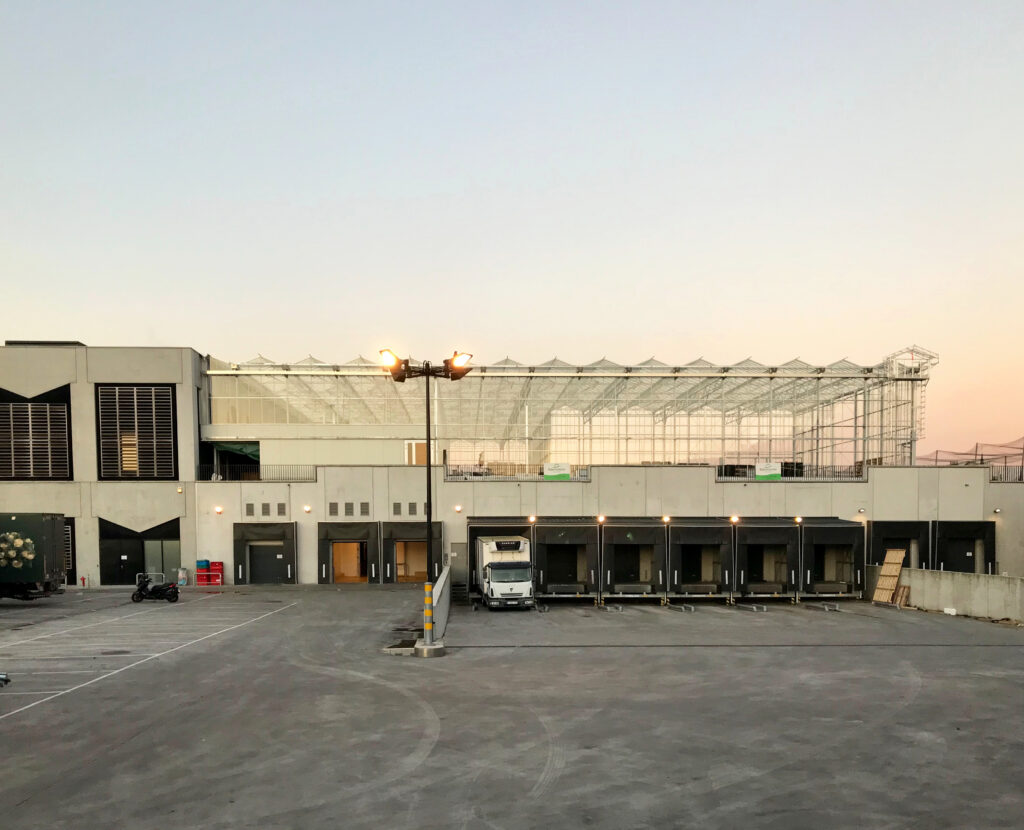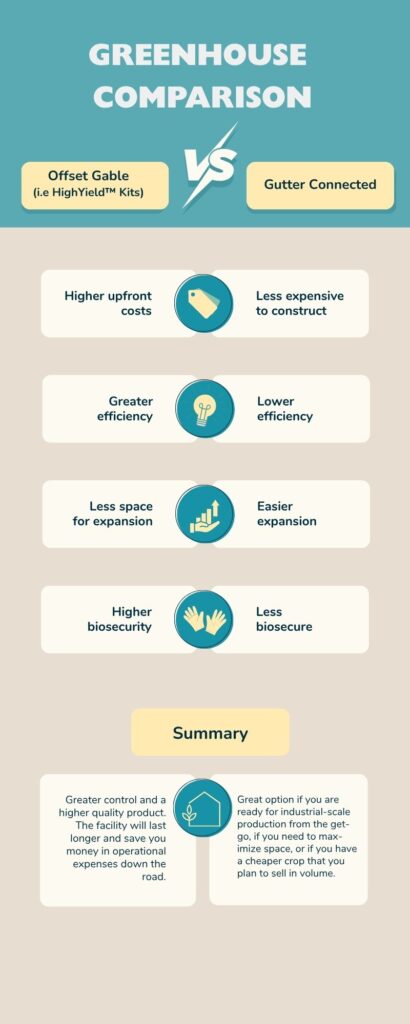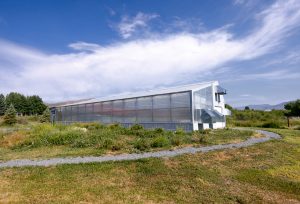When starting a new greenhouse cultivation operation or expanding an existing one, it’s easy to get overwhelmed with options. Typically the initial question is what type of greenhouse to purchase. But even within this query there are the additional questions around financial investment, potential account growth and long-term returns.
Below we will break down the differences between the Ceres offset gable greenhouse option (known as the HighYield™ Kit) versus a more traditional gutter connected structure. This discussion will help mid to large scale greenhouse operators, investors, and owners better understand which style will match their specific needs.


Greenhouse Types: Matching Greenhouse Type to Growth Goals
Offset Gable Greenhouses
The Ceres offset gable HighYield™ Kit (HYK) is Ceres’ proprietary greenhouse design, using highly insulated opaque walls with an offset gable roof set on an E/W axis for maximum sun exposure throughout the year. The HYK works as a stand alone greenhouse, or as a larger facility (using connecting corridors) to create an insulated, biosecure greenhouse complex with precision environmental control in each individual greenhouse. High light transmission glazings are also available for growers who need more light, or even full UV transmission.
While not the most space efficient design, the HYK is a great option for small to mid sized growing operations. Many HYK clients work in research and development, market testing, or need a structure to scale steadily without immediately committing to large infrastructure. The HYK also offers significantly better biosecurity throughout the facility, for sensitive grows where contamination from pests and pathogens are a concern.


Gutter Connected Greenhouses
Gutter connected greenhouses are the most commonly used greenhouse type in large scale greenhouse cultivation, offering multi bay configurations for high volume operations. They are easy to construct, repeatable, and relatively affordable to purchase and erect. They can also include roof venting for quieter interior environments and passive air ventilation, lowering operational expenses for cooling.
Gutter connected greenhouses don’t offer insulation or high end glazings, but the larger size of most gutter connected greenhouses means that the environment outside has less effect on the greenhouse environment.
For building sites with limited space, gutter connected greenhouses maximize the buildable space on a site, allowing greenhouses to butt up to one another. Rainwater collection is also easy with gutter connected greenhouses because gutters are built into the design.


Upfront Investment: Cost Structure and Design Efficiency
Offset Gable Greenhouses
The HYK is constructed of higher quality and therefore higher performing materials compared to traditional greenhouses. The upfront costs per square foot are typically higher with the HYK, owing to the combination of higher quality materials and generally smaller footprints. However, these factors also equate to a higher performing facility.
Gutter Connected Greenhouses
Gutter connected greenhouses can vary in cost, but traditionally are cheaper to purchase and construct than a high performance greenhouse. Simple details like steel columns, wet set into concrete piers, are much cheaper than pouring a full foundation stem wall. These styles are cheaper to build due to the reduced focus on energy efficiency. Gutter connected greenhouses are almost always designed with 8mm polycarbonate in the US, which is a very affordable glazing material, albeit lower performance in both light transmission and insulation than some higher quality materials.
Payback Periods: Speed of Return on Investment
One of the most important, and most often overlooked, factors for deciding which type of greenhouse to build are the operational expenses associated with the chosen greenhouse. There is often a direct correlation between the quality of materials and design, and the operational expenses of the facility.
While the HighYield™ Kit is often a more expensive greenhouse option initially, those costs are typically offset within 5 – 10 years of operation to make the HighYield™ Kit a more affordable option over time.
Gutter connected greenhouses are often constructed with lower quality materials (8mm polycarbonate on all exterior walls), which are less insulating (R1.4) than the materials offered with a HYK. With smaller gutter connected facilities, the lower insulation value usually equates to higher heating costs in cold areas, which can make a gutter connected facility more expensive over time, when factoring in both capital expenses and operational costs.
As gutter connected greenhouses get larger, the lower insulation value of the glazing begins to matter less as the volume of the greenhouse increases. As an example, let’s look at an acre greenhouse (approximately 45,000 square feet). If we design the structure with a 14’ eave height, we have approximately 630,000 cubic feet of greenhouse (not including the gables of the greenhouse). The square footage of the walls and roof for a one acre facility are approximately 12,000 square feet of wall and approximately 45,000 square feet of roof, for a total of 57,000 square feet. That means the amount of polycarbonate vs the volume of the building is under 10%, allowing the greenhouse to perform well despite the lower quality (lower insulating) sheathing materials.
Conclusion

Scalability
Gutter connected greenhouses offer ease of expansion, especially if there is less room to build. However, an offset gable HYK might be a good fit if biosecurity is important.
Upfront Investment & Payback Period
The HighYield™ Kit is going to typically be more expensive initially, but become less expensive over time. A gutter connected greenhouse will be cheaper initially and more expensive to run over time, although this option may pay off with sheer volume.
The Ceres HighYield™ Kit is going to offer you greater control and a higher quality product. The facility will last longer and save you money in operational expenses down the road.
A gutter connected greenhouse is a great option if you are ready for industrial-scale production from the get-go, if you need to maximize space, or if you have a cheaper crop that you plan to sell in volume.
Ultimately, a decision that requires as much upfront capital investment as a greenhouse will require a closer look at your specific budget, location, requirements, and long term goals.
We offer both our proprietary HighYield™ Kit greenhouse and gutter connected greenhouses.
We encourage you to explore all of our greenhouse options, take a look at our energy calculator to calculate your potential energy savings, and reach out to us so that we can help connect you with our team of experts who can assist you in finding the right greenhouse model for your operation.










